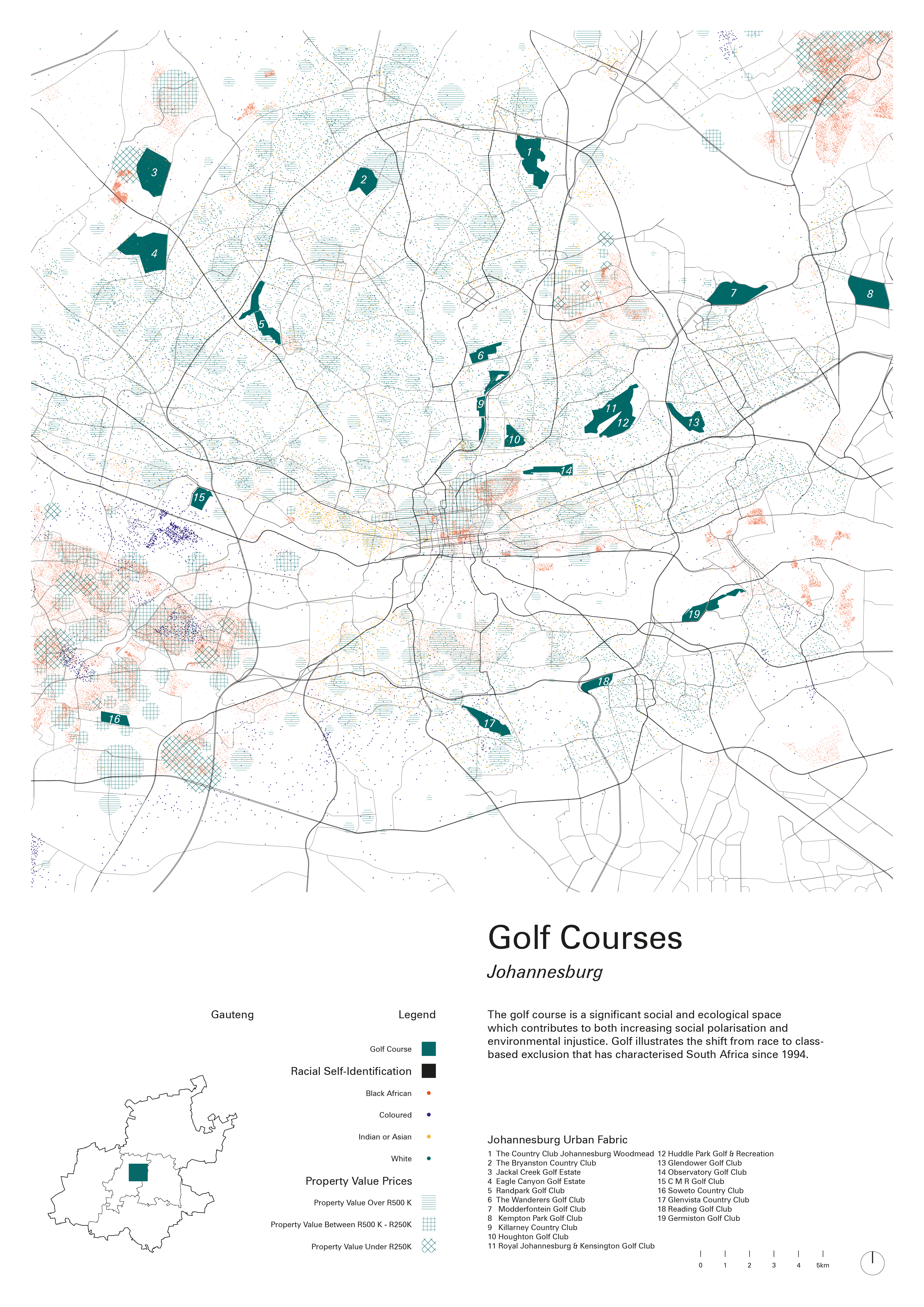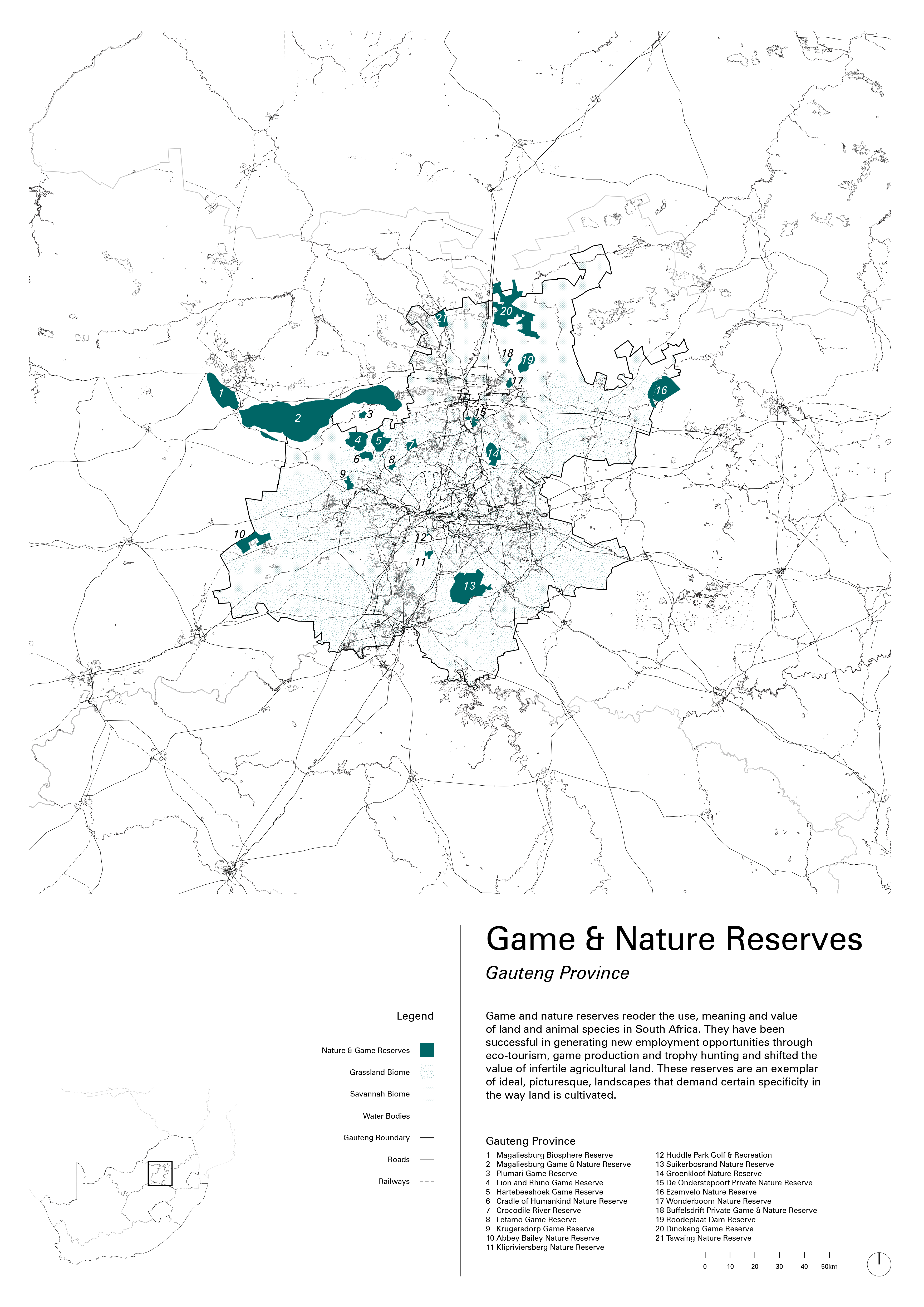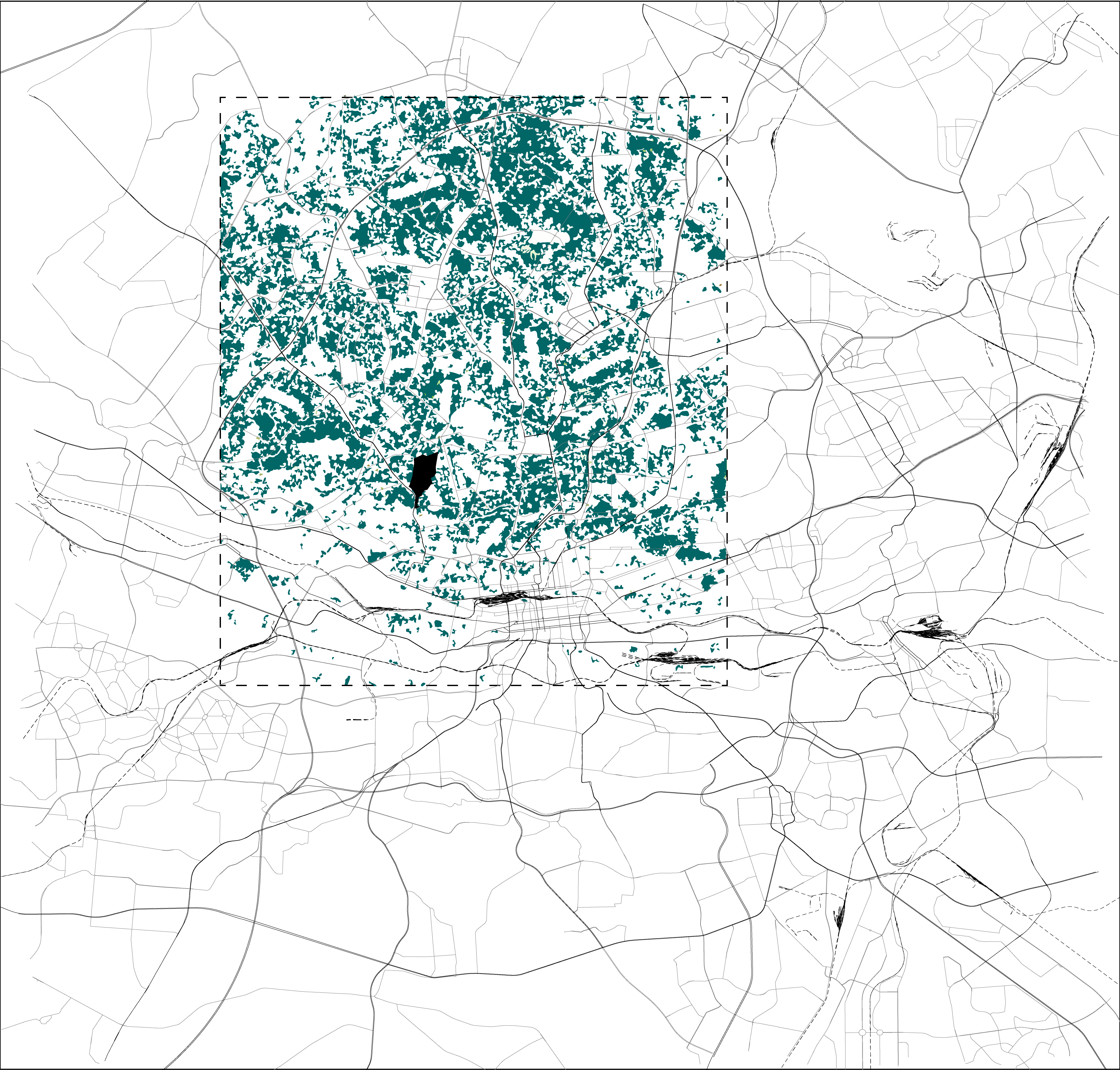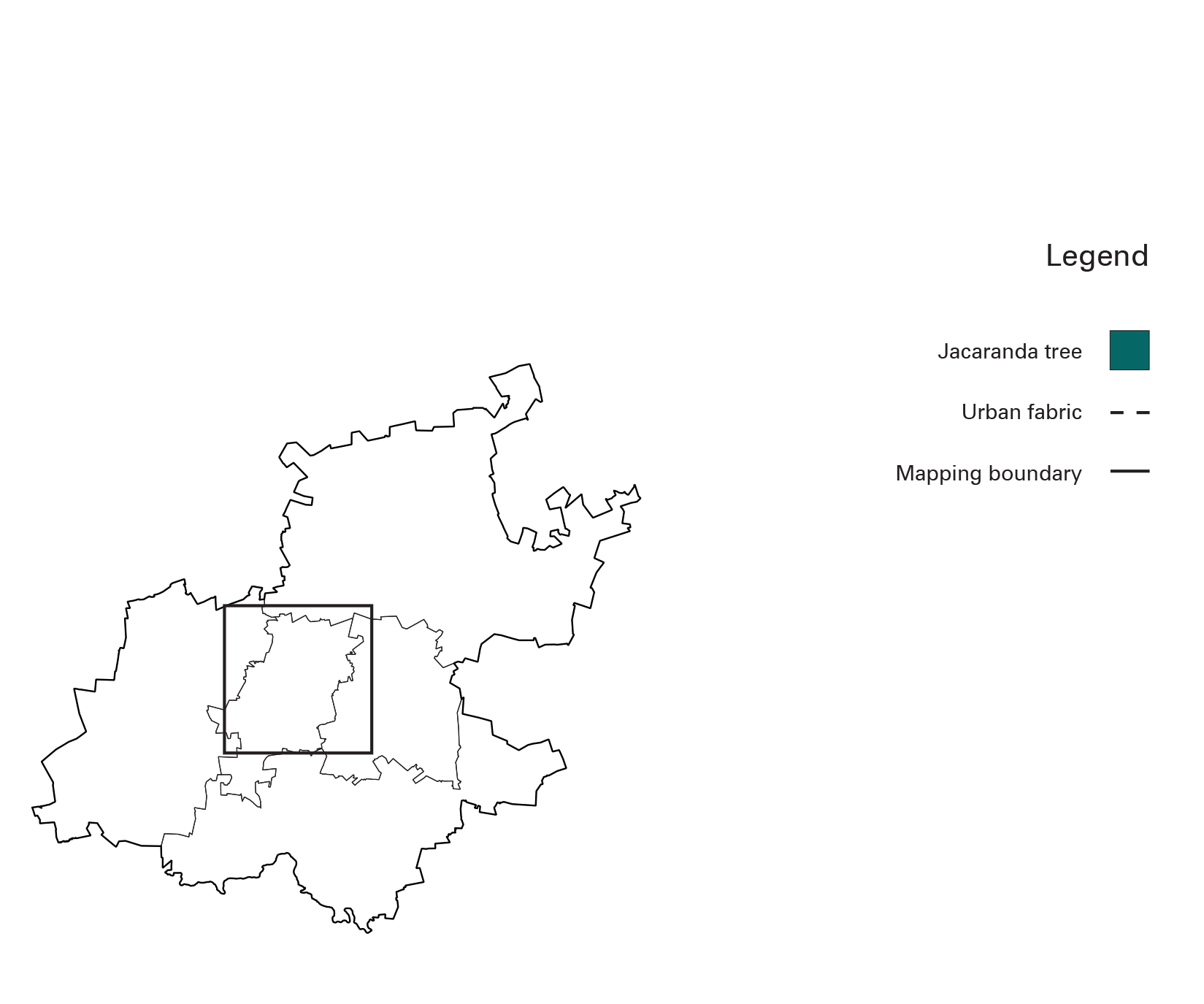Cultural Landscape
Cultural landscape is a term used to describe the symbiosis of human activity and the environment. It comprises of precise and manicured activities to support human desire, delivering value to the land.According to the World Heritage Committee, the term falls into three main categories: I- "a landscape designed and created intentionally by man"; II- an "organically evolved landscape"; III- an "associative cultural landscape" which may be valued because of the "religious, artistic or cultural associations of the natural element."
Three samples are considered from Johannesburg and its surroundings, namely the Botanical Garden, the Golf Course, and the Game Reserve. These were initially under scrutinized lands without agricultural or mining value, only acquiring exploitation purposes over time. They reflect an ideal image projected on land through the idea of Cultural Landscape.
However, with the need to mitigate current societal challenges such as urban pollution concentration and climate change, these areas are gaining new value by being recognized for their intrinsic ecological services provided to the city.



Botanical Garden
Golf Course
Game Reserve




Street Trees Distribution
Johannesburg
Johannesburg has approximately 37,000 species of Jacaranda’s tree. It is currently considered the largest man-made urban forest in the world. Although the tree responds well to the climate conditions, together with the Eucalyptus and English Oak tree, the species were introduced in the beginning of 1900s to support the minings wood needs.
With the change in mining structures and current societal challenges such as the highly polluted urban spaces and climate change, the tree gained a different value for providing several ecosystem services and becoming the ‘lungs and kidneys’ of cities: filtering air, water and noise pollution, while decreasing heat island effects, slowing down potential storm water flooding, soil erosion among others.




